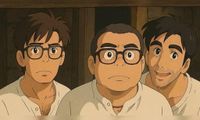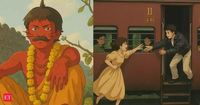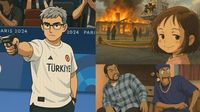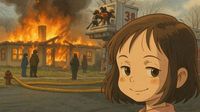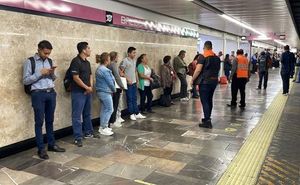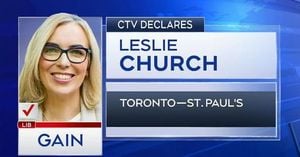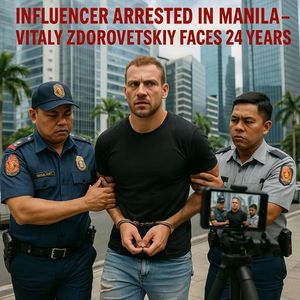The internet is currently buzzing with stunning AI-generated images in the iconic Ghibli style, thanks to OpenAI's latest image generation tool, launched on March 26, 2025. This innovative feature allows users to create visuals that echo the beloved aesthetics of Studio Ghibli, the renowned Japanese animation studio founded by Hayao Miyazaki and Isao Takahata in 1985.
Studio Ghibli is celebrated for its hand-drawn films, which feature rich watercolor and acrylic visuals that evoke a sense of warmth and nostalgia. The studio's unique style is characterized by pastel palettes, intricate details, and a magical quality that transports audiences into fantastical worlds. Films such as "Spirited Away," "My Neighbor Totoro," and "Princess Mononoke" showcase this artistic depth, earning Ghibli a devoted global following.
OpenAI's new feature, integrated into the GPT-4o model, allows users to generate images directly within the ChatGPT interface. While the tool is primarily available to ChatGPT Plus subscribers, who pay a monthly fee of at least $20, free users can still create Ghibli-inspired images by utilizing alternative platforms like Grok or Gemini.
On social media, the hashtag #GhibliTrend has gained traction as users share their AI-generated masterpieces. Many have taken to platforms like Twitter and Instagram to showcase their creations, transforming personal photos, favorite characters, and even everyday objects into whimsical Ghibli-style art. One user remarked, "It's been 24 hours since OpenAI unexpectedly shook the AI image world with 4o image generation. Here are the 14 most mindblowing examples so far (100% AI-generated)." This enthusiasm reflects the growing popularity of anime culture, particularly in the U.S., where approximately 72% of people watch anime daily.
Users have been experimenting with various prompts to guide the AI in creating detailed, whimsical portraits. Popular prompts include requests to transform photos into Ghibli characters or to recreate scenes with a magical, dreamlike aesthetic. For instance, one user wrote, "Transform this photo into a hand-drawn animated illustration. Apply watercolor techniques, soft organic lines, and a warm color palette. Maintain the original image's composition while adding a magical, dreamlike aesthetic. Emphasize gentle color transitions and a whimsical, slightly surreal atmosphere typical of classic Japanese animation."
OpenAI's CEO, Sam Altman, joined the trend by changing his X profile picture to a Ghibli version of himself. He humorously noted, "Be me. Grind for a decade trying to help make superintelligence to cure cancer or whatever. Mostly no one cares for first 7.5 years, then for 2.5 years everyone hates you for everything. Wake up one day to hundreds of messages: ‘look I made you into a twink Ghibli style haha.’” His playful engagement highlights the cultural impact of this new feature.
The Ghibli art style's appeal lies not only in its aesthetic but also in its emotional resonance. The distinctive visuals often blend calmness with engaging storytelling, drawing audiences into immersive worlds. As users continue to reimagine themselves and their surroundings in the Ghibli universe, the trend has sparked a wave of creativity across social media.
While OpenAI's image generation feature has received widespread acclaim, it has not been without controversy. Hayao Miyazaki, the co-founder of Studio Ghibli, has expressed strong reservations about AI-generated imagery. In a resurfaced clip from a documentary, he stated, "I am utterly disgusted. If you really want to make creepy stuff you can go ahead and do it. I would never wish to incorporate this technology into my work at all. I strongly feel this is an insult to life itself." His comments reflect a broader debate about the role of technology in creative fields.
For those eager to create their own Ghibli-style images, the process is straightforward. Users can enter simple text prompts within the ChatGPT interface, specifying details such as aspect ratio, color schemes, and even uploading existing images for transformation. The tool's ability to analyze and incorporate elements from user-uploaded images enhances its capacity to generate contextually relevant visuals.
As the trend continues to evolve, users are encouraged to experiment with different AI tools. Besides ChatGPT's DALL·E, alternatives like Midjourney and Getimg.ai offer similar capabilities for generating Ghibli-style artwork. These platforms allow for varying levels of customization, enabling users to create unique pieces that reflect their individual styles.
In summary, the recent surge in Ghibli-style AI-generated images signifies a growing intersection between technology and art. OpenAI's new tool has not only democratized access to high-quality image generation but has also sparked conversations about the future of creativity in an increasingly digital world. As fans of Studio Ghibli embrace this new form of expression, the enchanting worlds created by Miyazaki and Takahata continue to inspire and captivate audiences, both old and new.

